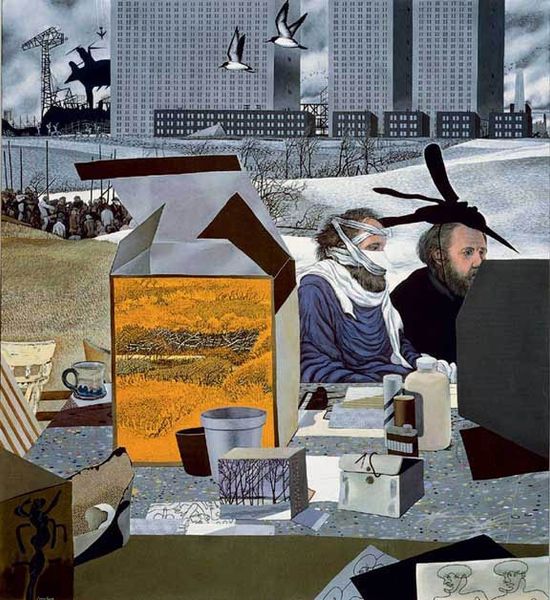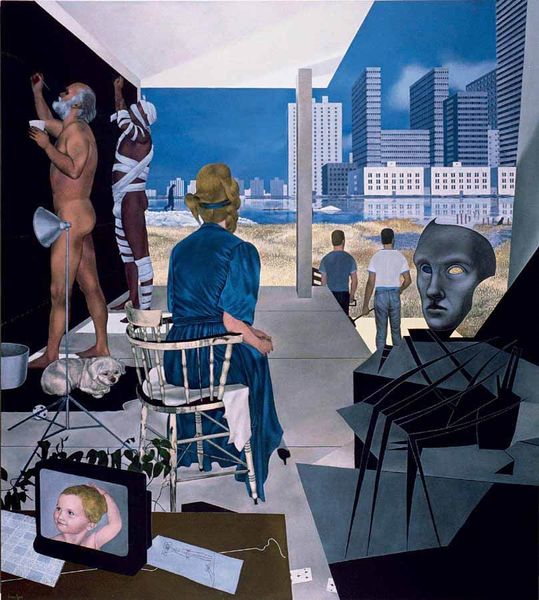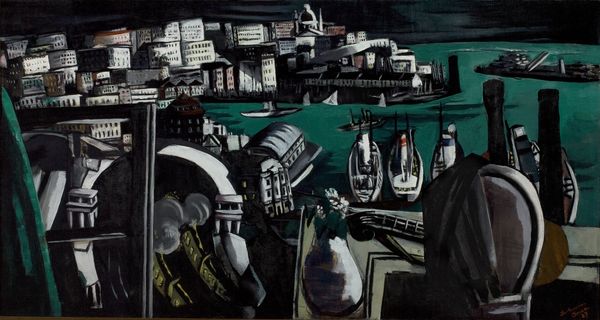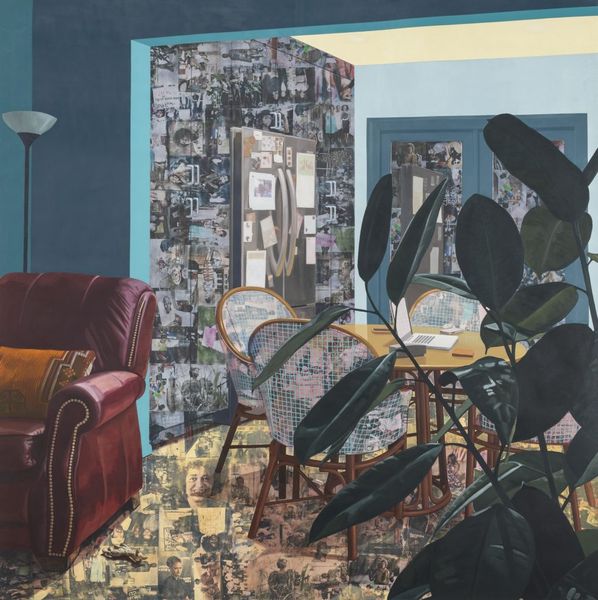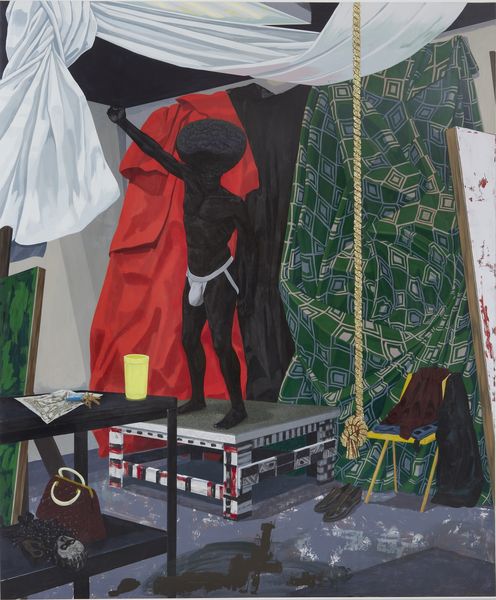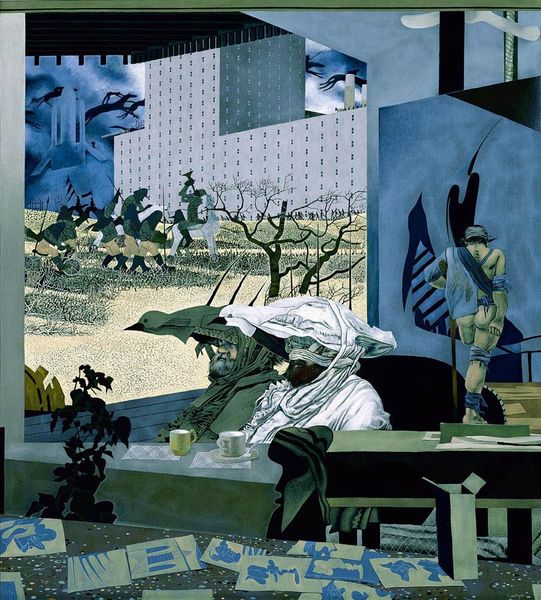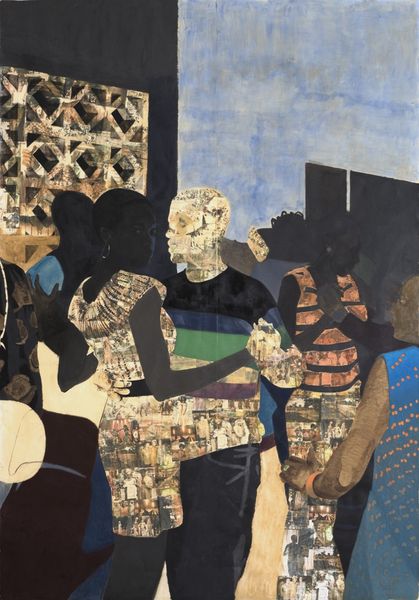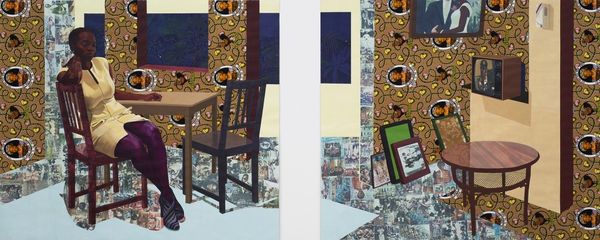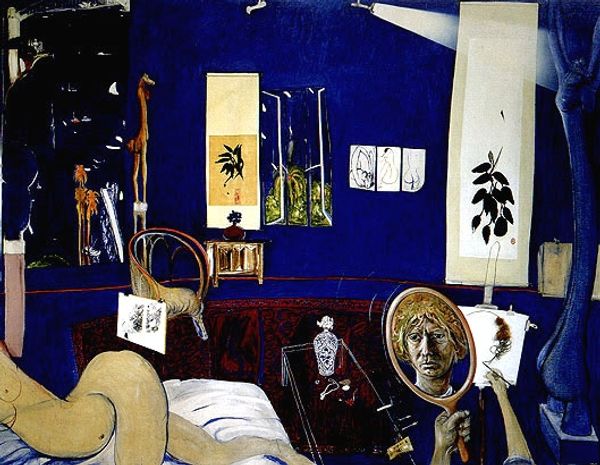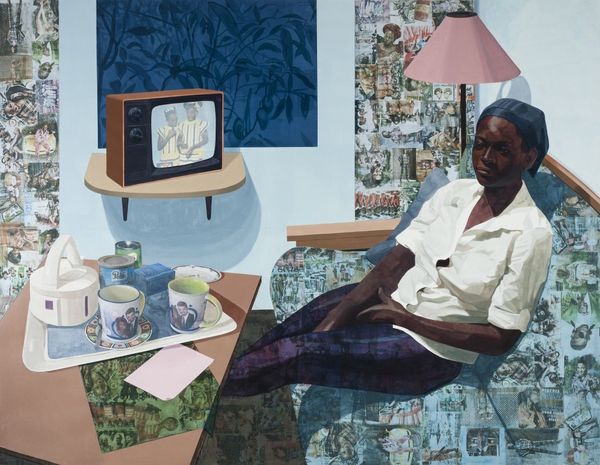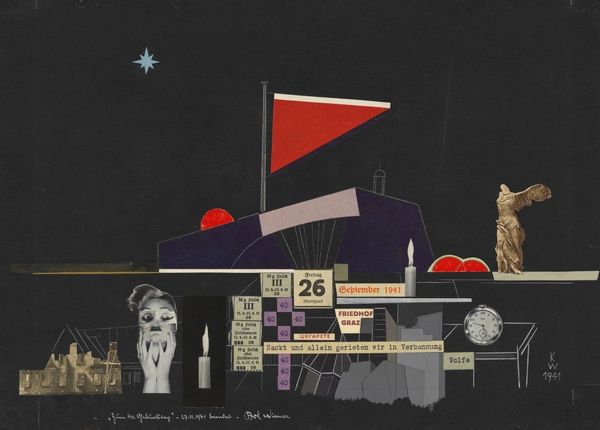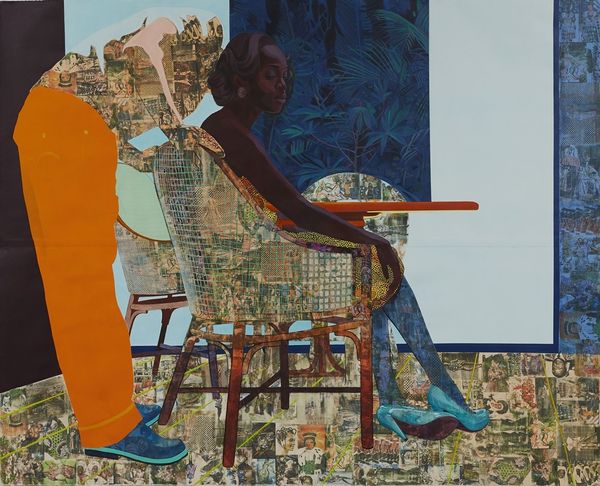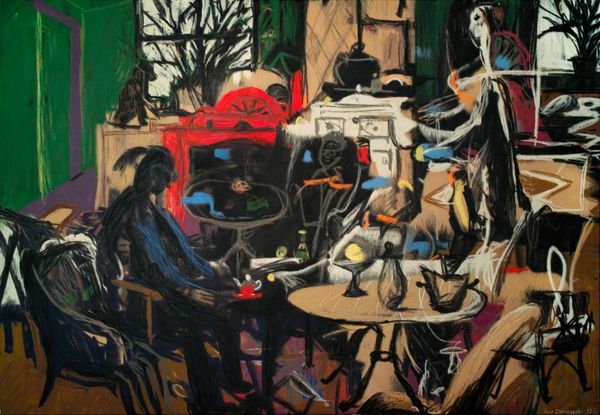
painting
#
portrait
#
contemporary
#
painting
#
figuration
#
cityscape
#
modernism
Dimensions: 173 x 192 cm
Copyright: Ivan Eyre,Fair Use
Curator: "March Past," painted in 2000 by Ivan Eyre, presents us with a compelling blend of interior and exterior space. Editor: My immediate impression is one of cool detachment. There’s something very still and deliberate about the composition and palette that keeps me at a distance. It feels almost staged. Curator: Indeed. Look at how Eyre uses perspective. The architecture looming in the background competes for space with the domesticity of the foreground. It speaks, perhaps, to the tension between personal and public spheres within modern experience. Note also the enigmatic figures. Editor: Yes, and that precise rendering of the space does, paradoxically, lend it a slightly surreal quality. Semiotically, this could suggest feelings of being surveilled within modernity. I keep wanting to unpack that faceless row of figures in the middle ground, like symbolic border guards almost. Their masks render them anonymous, powerful in number, yet completely without humanity. Curator: Precisely, consider their posture – aligned as if an ancient Greek chorus. But in a contemporary context, their uniformity seems ominous, alluding to themes of conformity, social control, and the suppression of individuality so commonly feared in 20th and 21st century society. It is the urban as the surreal. Editor: And it’s the coolness of that light, washing out any trace of warmth in their complexions. What about the open doorway—the implied division of foreground and background, and public vs. private? Does it offer us escape, or are we trapped in the geometry of his view? Curator: I lean toward seeing the open door as both inviting and foreboding. It provides access to that march past – both literal and metaphorical – of modern life and yet does it come at the risk of losing one’s individuality, or creativity? Perhaps he’s pondering just that while sketching away there in the lower right of the picture? Editor: The piece presents the paradox that we are individuals and part of society and must choose to relate, conform or create our personal identity apart from our societies influence, however it does present this to the audience passively as they stand apart from the artwork itself Curator: Eyre has certainly created a lasting provocation on our position in an era that seems constantly to march toward some yet-unknown future, whether we like it or not. Editor: And I'll think more about what that detached style might mean. A fascinating play with form and symbolic resonance.
Comments
No comments
Be the first to comment and join the conversation on the ultimate creative platform.
